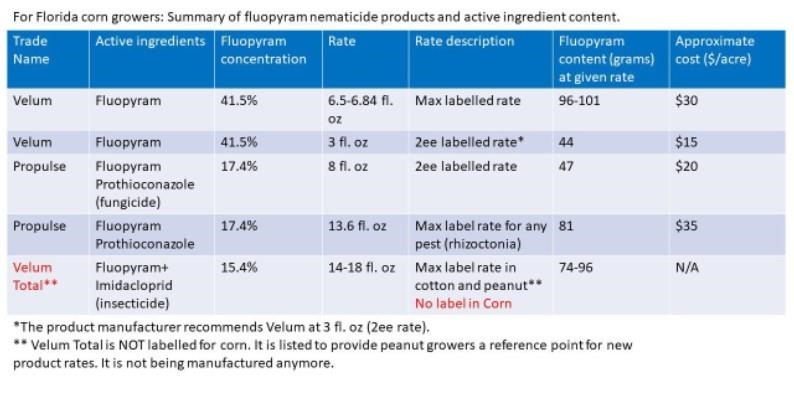By Zane Grabau
Nematicide application is one of the main methods for managing plant-parasitic nematodes in Florida corn. Fluopyram is a relatively new nematicide chemistry available for corn and other row crops. Currently, multiple products containing fluopyram are labelled for use in corn as the manufacturer (Bayer CropSciences) transitioned from one formulation to another. Recently, I’ve received questions from growers and crop consultants about fluopyram products and rates for field corn, so this article seeks to clarify this. The information provided should only serve as a guide. Always read and follow label directions.
A summary of fluopyram products, labelled rates, and cost estimates is provided in the table below. A simple explanation is that Velum (fluopyram only formulation) at 3 fluid ounces/acre is the current manufacturer-recommended rate, as described on a 3(ee) label. For nematode control, all fluopyram products are labelled for in-furrow application in field corn. Velum is labelled for use up to 6.84 fluid ounces in field corn on the main label. Propulse (mixture of fluopyram and the fungicide prothiconazole) was the first fluopyram labelled on corn and is still currently available. For nematodes, Propulse is labelled at 8 fluid ounces/acre, similar to the reduced rate of Velum, again on a 3(ee) label. Propulse is also labelled to treat Rhizoctonia at an in-furrow rate of 13.6 fluid ounces/acre. Velum Total is not labelled for corn, but is listed in the table so growers can compare fluopyram content across products/rates, since many growers are familiar with that product. Fluopyram concentration varies by product.

Source : ufl.edu